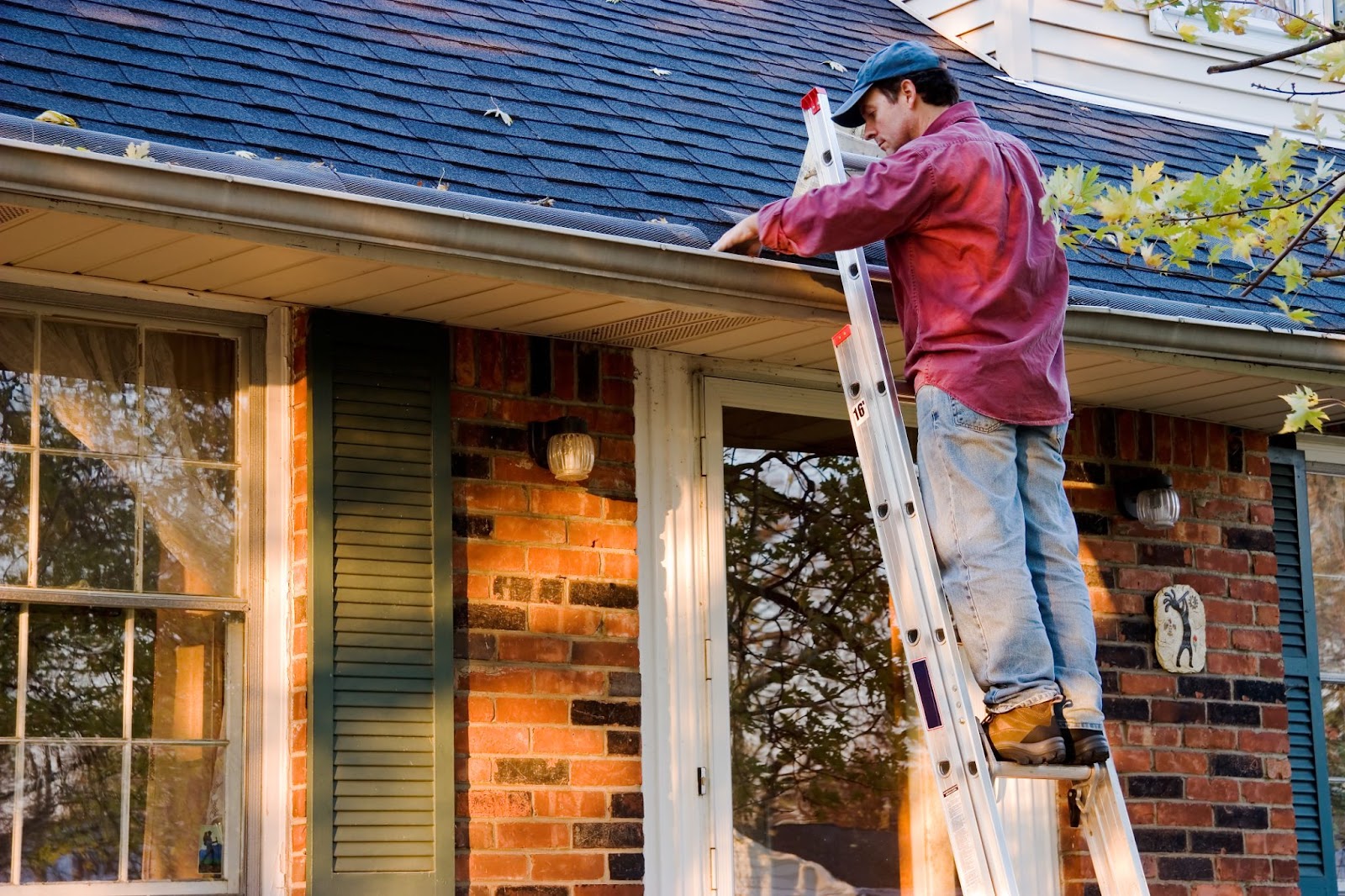Rain gutter problems might seem inconsequential, but the longer you leave them, the higher the risk of damage. When rainwater doesn’t flow as it should, it may damage your roof, siding, foundation, basement, and landscaping.
That’s why you need to know what to watch for. In this blog, we’ll walk you through the most common issues homeowners face with their gutters — and how to handle a rain gutter fix before things get worse.
Whether you’re the hands-on type or prefer to call in the pros, catching these problems early on will save you time, money, and stress.
Let’s dive in!
Why do you need rain gutters?
Your rain gutters protect your home in more ways than you might think. When they work properly, they keep rainwater from soaking your siding, flooding your basement, and ruining your landscaping.
If you don’t repair rain gutters, water may pool around your home. It will seep into your foundation, weaken it, and eventually cause cracks. Water damage to siding leads to mold, mildew, and peeling paint. If you ignore minor problems, they grow into major structural problems that cost thousands to fix.
That’s why it’s smart to handle gutter damage repair early. Taking care of your gutters helps protect your biggest investment: your home.
Most common rain gutter problems
Let’s look at the most common issues your gutters face and how to remedy them best.
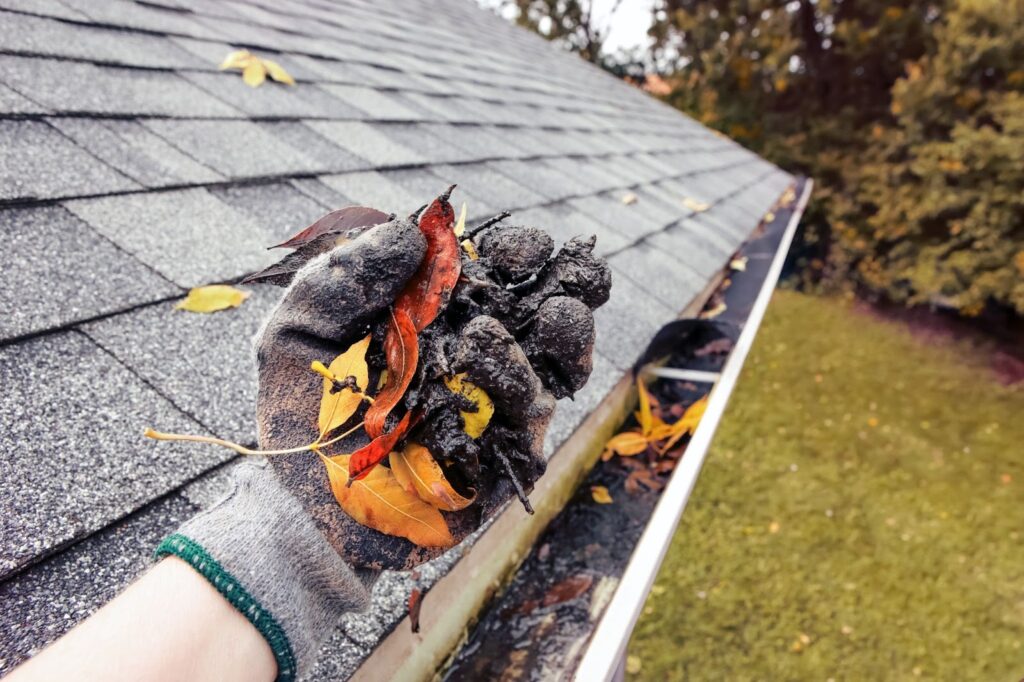
Clogged gutters
Leaves, twigs, seeds, and bird nests pile up inside your gutters. When this happens, water has nowhere to go. Instead of flowing safely away from your house, it spills over the sides or backs up onto your roof.
Overflowing gutters will rot the wooden parts of your roof and siding. They may dump too much water next to your foundation, causing cracks and leaks.
The easiest rain gutter fix for clogs is regular cleaning. If you feel safe on a ladder, scoop out the debris yourself. Or hire a professional for damage repair and cleaning.
Another smart move is installing gutter guards. They keep most of the debris out, so you don’t have to worry as much about clogs causing bigger problems later.
Sagging gutters
Sagging happens when gutters get too heavy with water, debris, or ice during the winter. Sometimes, the hangers that hold the gutter up pull loose from the house.
When your gutters sag, they no longer move water the right way. Water may collect in the sagging part, causing additional weight and pressure. Eventually, the entire gutter section could tear away from your home, damaging the roof, fascia boards, and siding.
If you notice a sag, it’s time to repair rain gutter fasteners or brackets. You might need to replace hangers or screw them back into stronger parts of the wood.
If the fascia board is rotten, you’ll need a professional rain gutter damage repair to fix both the board and the gutter.
Catching sagging early keeps rain gutter problems from leading to even more expensive repairs later.
Leaky gutters and seams
Over time, gutters develop small holes and cracks. Joints where two pieces of gutter meet — called seams — are common spots for leaks.
When rain gutters leak, water drips onto your siding or pools around the foundation of your house. This constant dripping may cause rot, staining, and erosion.
In cold areas, leaky gutters also create dangerous icicles or ice dams in winter. The National Weather Service offers some tips on how to prevent ice dams.
For small leaks, a rain gutter fix might be as simple as using gutter caulk or a patch kit. But if the leak is wide or the gutter is old, a full repair may be necessary.
Keeping your gutters sealed tight means rainwater safely moves away from your home, where it belongs.
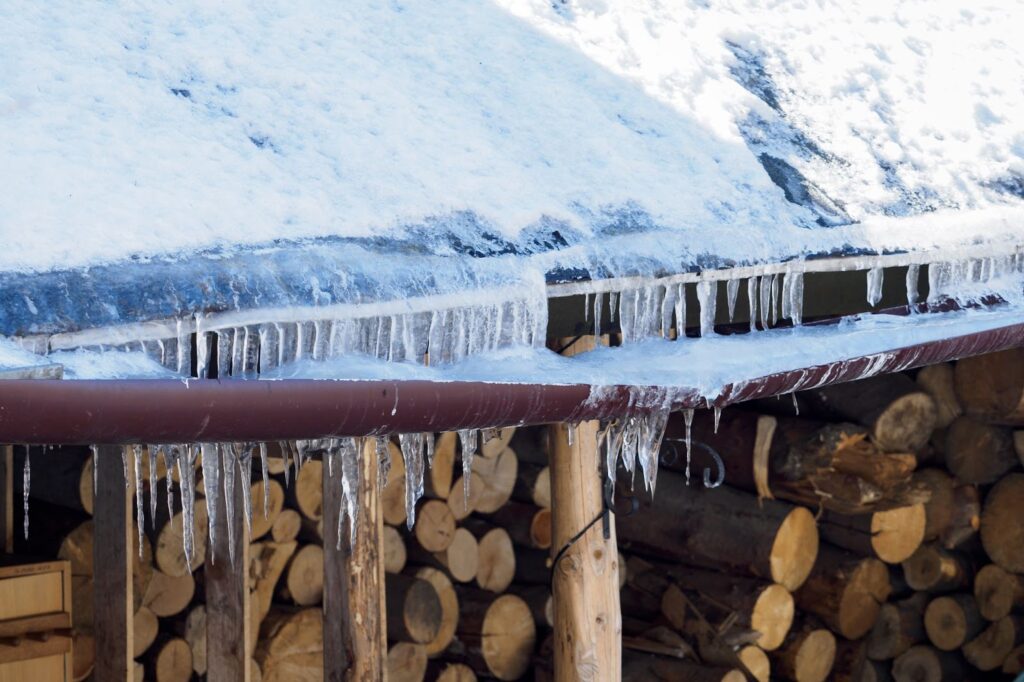
Improper gutter slope
Believe it or not, gutters aren’t installed completely flat. They need a slight tilt — about ½ inch for every 10 feet — to help water flow toward the downspouts.
If your gutters don’t have the correct slope, water will sit in one place. Standing water adds weight, speeds up rust and corrosion, and becomes a home for mosquitoes and pests. Additionally, it may cause the gutters to sag over time.
An improper slope is one of the trickiest issues because it’s not always easy to spot until you notice severe water pooling. Fixing the slope means rehanging the gutters, so it’s smart to call a professional for damage repair.
Disconnected or leaking downspouts
Downspouts are as important as the gutters themselves. They carry rainwater down to the ground and away from your home.
If a downspout becomes disconnected or blocked, water will pool next to your foundation. Over time, that water will eat away at your home’s base, leading to cracks, leaks, and potential sinking.
For a rain gutter fix, make sure all downspouts are securely attached. Check joints and elbows for leaks. You should also ensure that downspouts lead water at least four to six feet away from the foundation.
Rust and corrosion
You might notice brown spots or flaking areas if you have metal gutters. These are signs of rust.
Rust weakens gutters by creating thin spots and holes through which water passes. Once rust starts, it spreads fast, especially in areas where leaves stay wet inside the gutters for long periods.
A small rust patch might be fixable with sanding and waterproof paint. However, when there’s a lot of rust, it’s time to replace the damaged sections. Professional gutter damage repair services will match new materials to your existing gutters so they look good and last longer.
Choosing rust-resistant materials like aluminum or vinyl for new gutters saves you from this problem in the future.
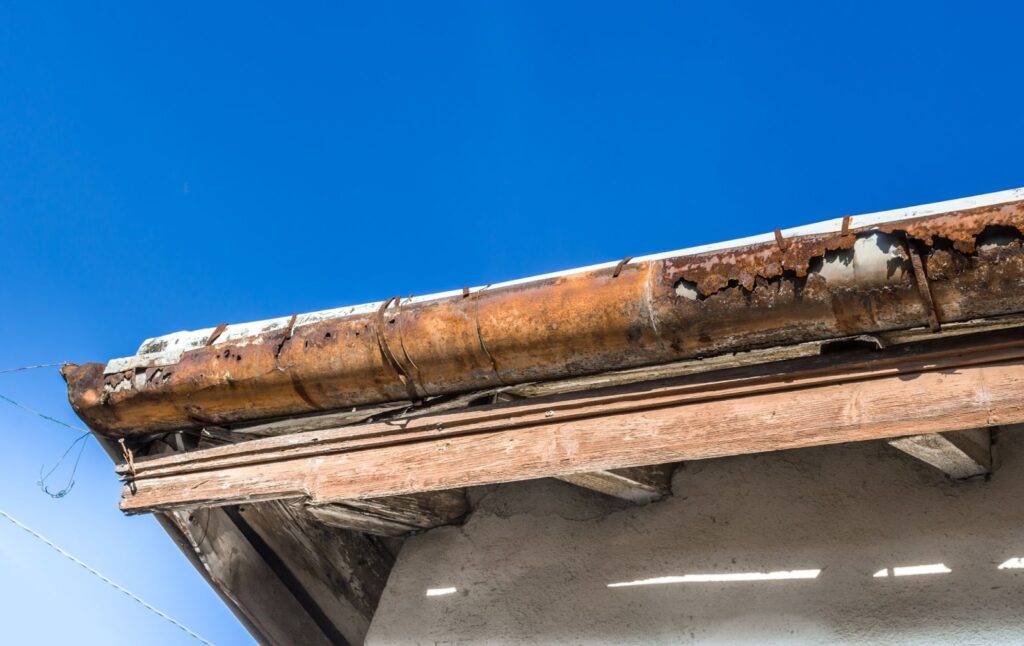
DIY vs. professional repair — when to call the experts
Some rain gutter fixes are easy for homeowners to tackle. Cleaning out leaves, patching tiny leaks, or reattaching a loose downspout can usually be done with a sturdy ladder and a few basic tools.
But bigger rain gutter problems, like sagging, leaks at multiple seams, or bad slopes, require a professional’s attention. If you don’t fix these issues properly, your home could suffer even more damage.
That’s where companies like Wasatch Rain Gutters come in. We handle all kinds of gutter damage repair quickly and safely. Plus, we’ll check your entire gutter system to ensure everything works the way it should.
Preventative maintenance tips
The best way to avoid needing a rain gutter fix is to keep your gutters clean and in good shape all year.
Here’s how:
Regular cleaning
Start by cleaning your gutters regularly — at least twice a year. Spring and fall are the most important times when trees drop the most debris. If trees surround your home or it gets hit with heavy storms, you might need to clean them more often. Leaves, twigs, and dirt pile up fast and block water from flowing.
After storm checks
After big storms, it’s smart to check your gutters for new damage. High winds and heavy rain often loosen fasteners, cause sagging, or knock downspouts out of place. Taking a few minutes to spot problems early helps you avoid bigger repairs later.
Gutter guards
Installing gutter guards is another preventative step. These screens or covers sit on top of your gutters, stopping most leaves and debris from getting inside. While they don’t eliminate cleaning altogether, they make it a lot easier and reduce the number of times you’ll need a full repair.
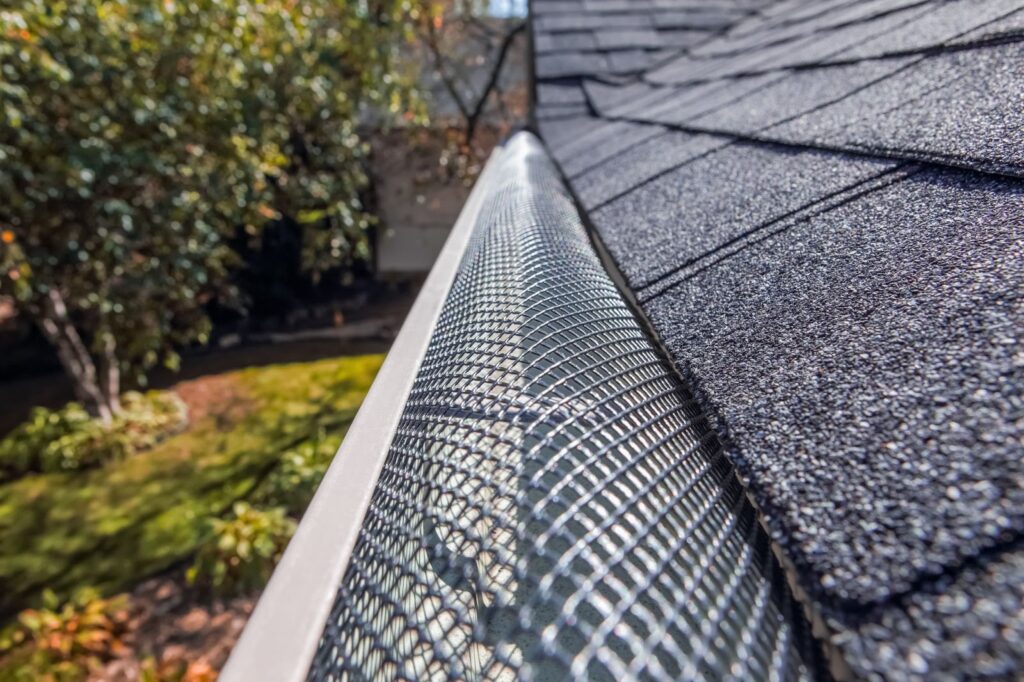
Look for signs
Also, keep an eye out for signs of trouble throughout the year. Watch for water spilling over the sides, plants growing in the gutters, rust spots, or areas where the gutters pull away from the roof. These issues are often the first signs of bigger gutter damage repair needs.
Annual inspection
Finally, consider scheduling a professional inspection once a year. A trained expert will spot things you might miss and ensure everything works as it should. They will also recommend fixes before they turn into costly problems.
Good maintenance means fewer rain gutter problems, fewer emergency calls, and more years of protection for your home.
Repair or replace your gutters with Wasatach Rain Gutters
Rain gutter problems are common, but most are easily fixable when caught early. Whether it’s a simple rain gutter fix like cleaning out debris or a bigger job like full rain gutter damage repair, acting fast protects your home and saves you money.
That’s where Wasatch Rain Gutters comes in. Our local team has years of hands-on experience, specializing in everything from cleaning and maintenance to necessary fixes and full replacements.
We also install high-quality gutter guards to stop clogs before they start. No matter your roofline or drainage setup, we know how to create long-lasting solutions, even during Utah’s harsh weather.
If you’ve noticed any signs of gutter damage or want to be sure everything’s in good shape before the next storm, don’t wait. Reach out to Wasatch Rain Gutters today. We’ll help you take care of your rain gutters with reliable service and expert care you can count on.

